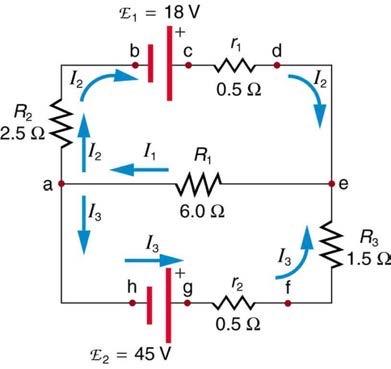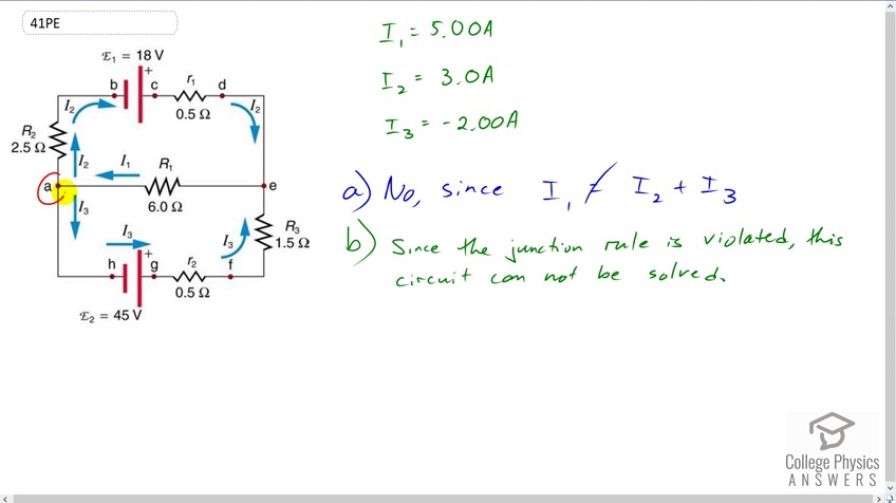Question
Consider the circuit in Figure 21.53, and suppose that the emfs are unknown and the currents are given to be , , and . (a) Could you find the emfs? (b) What is wrong with the assumptions?

Final Answer
- No, since
- Since the junction rule is violated, this circuit can not be solved with the information given.
Solution video
OpenStax College Physics, Chapter 21, Problem 41 (Problems & Exercises)

vote with a rating of
votes with an average rating of
.
Video Transcript
This is College Physics Answers with Shaun Dychko. These values for the currents given to us for this circuit are not possible because if you apply the junction rule at point A, the currents going into it have to equal the total currents coming out. But the current I one being five amps does not equal three plus negative two. So since the junction rule is violated the circuit can't be solved with these numbers given.